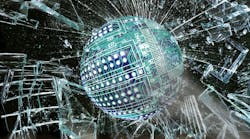It’s all your fault. You engineers who create products, design circuits, and develop new software. You are the ones that have made products more complicated and harder to use. My question to you is this: Have you gone too far in applying all of the technically sophisticated chips and software into end products? I’m beginning to think so.
Several recent experiences got me to thinking that maybe we have misused technology. Yes, the products do eventually serve their purpose or solve some problem. However, in the process of designing them, you go overboard. The result is a product that meets the design criteria but is excruciatingly difficult to use.
I wonder if we have produced a whole generation of “over the top” (OTT) products. Installing and learning new software is the one that gets to me most. Yes, I can do it and, in fact, have been doing it for years. But it doesn’t get any easier.
Hard to Deal with Software
Over the holidays I bought some new software and installed it. Of course, it all starts with a download and then some install process. That went okay, but then the trouble began. There was a compatibility issue with my Windows PC. Missing drivers was a problem, but the software never told me what drivers were missing.
I finally called the help line at the company and they were able to pinpoint the issue. On problem: That company doesn’t provide those drivers. So out to the internet I go. It took several hours to find what I was looking for, but I did eventually locate the drivers, install them, and reboot.
So finally, I got the install done. But what a frustration and massive time-waster. All I really want to do is to use the software. I hate to waste time fussing with all of this procedure and missing bits and pieces. I’m not getting stuff done.
It’s been said that software is supposed to be a good tool to improve your productivity. That’s strictly theoretical. Adopting new software is probably the most non-productive thing you can do. You must get it to work then learn how to use it. Do you software developers ever think about this? What ever happened to the concept of “user-friendly”?
Ham-Handed Complexity
Another recent experience made me nearly furious. I acquired a new handi-talkie (HT) for the 2 meter and 70 cm bands (I’m a ham, W5LEF). It’s a tiny little thing but puts out 5 W in the 420-MHz band. Not bad. I want to use it to make radio contacts through one of the ham satellites. I got a dual 2-m/70-cm Yagi antenna with a diplexer to use with the HT.
The problem is this HT is about as complex I have ever encountered. It has 18 buttons and three dual concentric knobs plus four jacks or other connectors. To make this thing easy to use, it comes with a 200+ page manual. But the real fun begins with the display as you work your way through the multiple levels of menus. Lots of options to choose from. And the programming process is off-putting.
After numerous multiple hour sessions, I did get the HT to work. Basically, I really dislike this product even though it’s high quality and works well once you figure out how to use the bloody thing. Another frustrating, time-consuming product that seems to want to prevent you from using it as intended.
I blame the engineers who designed the MCU-based controls. It’s so easy to add features and minimally usable functions. Just write a few lines of extra code and magically you can do things like change the background color of the LCD screen with a third-level menu selection. Anyway, I have again spent a massive number of hours fooling around with this thing. I just want to use it, not become a slave to its operational peculiarities.
Helpful Hints
A few notes to you guys making these products:
- Try to make things simpler, not more complex.
- Don’t assume massive prior knowledge and experience to set up and use the product.
- Don’t expect the user to know all that you know.
- Just because you can do something doesn’t mean that you should.
- Be more ruthlessly selective in adding functions and features. Will anyone really want them or use them?
- Remember what K.I.S.S. stands for.
Over the years, there’s been a dedicated movement to reduce power consumption and improve efficiency in electronic products. Why don’t we initiate a program like that to make products easier to install and use? Let’s get back to keeping the end user in mind as you design. And don’t lose sight of the objective; that is, turn a profit for your company with products that do the job in an easy way that makes the customer come back for more. Doing otherwise is just technology suicide.
Anyway, sorry for the rant. It’s my opinion that most electronic products have just become way too complex, hard to learn, time-consuming, and frustrating to use. Perhaps it doesn’t bother most people? Or they don’t recognize it as a problem? Anyway, that’s just the way it is. Maybe it’s just me?

